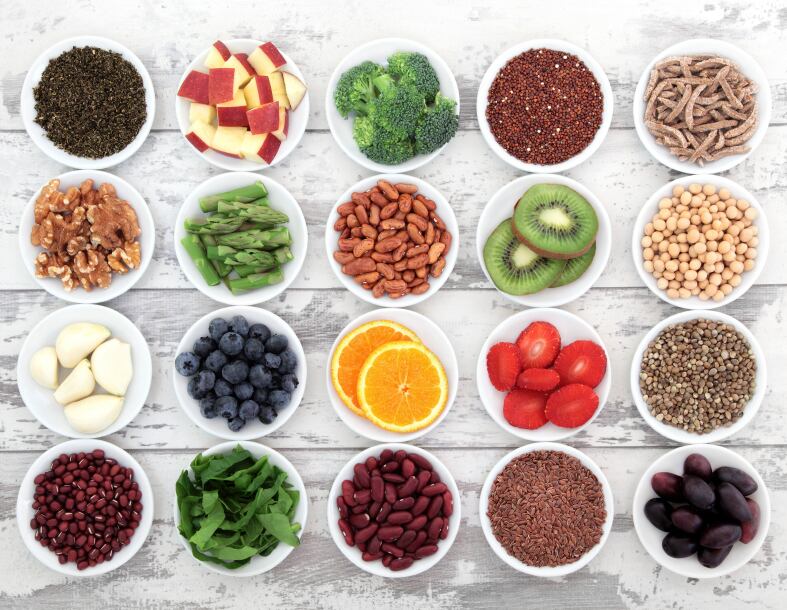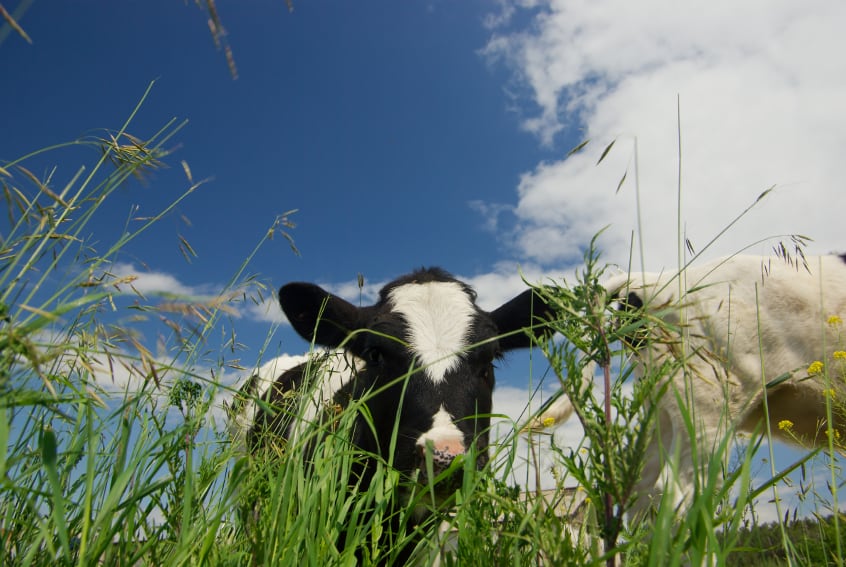The report, the culmination of a three-year project bringing together 37 experts from 16 countries, concluded that diet and food production must “radically change” if we are to feed the growing global population without wreaking “catastrophic” damage on the planet and population health.
With the population set to reach 10 billion people by 2050, researchers stressed the “inextricable link” between what we eat and human and planetary health. Future food production must be intensified sustainably to meet the needs of the growing population within the planetary limits for climate change, biodiversity loss, land and water use, as well as nitrogen and phosphorus cycles.
Business as usual is not an option: Current diets are pushing the Earth beyond its planetary boundaries and resulting in negative population health outcomes, they argued.
“The food we eat and how we produce it determines the health of people and the planet, and we are currently getting this seriously wrong... We need a significant overhaul, changing the global food system on a scale not seen before in ways appropriate to each country’s circumstances,” warned University of London’s Professor Tim Lang.
Policy action needed to promote diet shift
To meet the dietary guidelines, researchers suggested that global consumption of red meat and sugar will need to decrease by more than 50% by 2050. Consumption of nuts, fruits, legumes and vegetables will need to increase more than twofold.
The report’s authors also noted that some regions will need to make sharper adjustments than others to fall in line. In North America, for example, people eat an average of 6.5 times the recommended amount of red meat, while countries in South East Asia eat only half the recommended levels.
Professor Lang conceded that this is “unchartered policy territory” with no “easy fix” to the challenges facing the current food system. Nevertheless, he added: “This goal is within reach and there are opportunities to adapt international, local and business policies. The scientific targets we have devised for a healthy, sustainable diet are an important foundation which will underpin and drive this change.”

The authors estimate that adoption of their dietary recommendations would improve the intake of most nutrients at a population level, increasing the amount of mono and polyunsaturated fatty acids and reducing consumption of saturated fats.
Modelling the impact that this shift could have on mortality rates from diet-related NCDs, they found it could avert between 10.9 and 11.6 million premature deaths each year.
They called for the adoption of policies to support healthy diets, including addressing availability and access through infrastructure investment. The researchers also said they want to see the introduction of “advertising restrictions” and education campaigns.
Affordability is also crucial: “Food prices must reflect production and environmental costs. As this may increase costs to consumers, social protection for vulnerable groups may be required to avoid continued poor nutrition in low income groups.”
‘No silver bullet’ for agriculture
But it isn’t just what we eat that needs to change. The way that we produce food also requires a radical overhaul, the EAT-Lancet commission suggested. To move to a sustainable footing requires the decarbonisation of agriculture, zero-loss biodiversity, net zero expansion of agricultural land, and “drastic improvements” in fertiliser and water use.
"Humanity now poses a threat to the stability of the planet. Sustainability of the food system must therefore be defined from a planetary perspective,” said co-lead commissioner Professor Johan Rockström of the Stockholm Resilience Centre, Sweden, and Potsdam Institute for Climate Impact Research, Germany.
Estimating the minimum, unavoidable emissions of greenhouse gasses to provide a ‘healthy diet’ for 10bn people, the authors concluded non-CO2 GHG emissions of methane and nitrous oxide will remain between 4.7-5.4 gigatonnes. This means decarbonisation of the world energy system “must progress faster than anticipated” to accommodate the growing demand for food.
"Designing and operationalising sustainable food systems that can deliver healthy diets for a growing and wealthier world population presents a formidable challenge. Nothing less than a new global agricultural revolution. The good news is that it is not only doable, we have increasing evidence that it can be achieved through sustainable intensification that benefits both farmer, consumer and planet,” said co-lead Commissioner Professor Johan Rockström, Stockholm Resilience Centre, Sweden and Potsdam Institute for Climate Impact Research, Germany.
“Our definition of sustainable food production requires that we use no additional land, safeguard existing biodiversity, reduce consumptive water use and manage water responsibly, substantially reduce nitrogen and phosphorus pollution, produce zero carbon dioxide emissions, and cause no further increase in methane and nitrous oxide emissions.
“There is no silver bullet for combatting harmful food production practices, but by defining and quantifying a safe operating space for food systems, diets can be identified that will nurture human health and support environmental sustainability.”
Policies that incentivise producers to grow nutritious, plant-based foods and support diverse production systems were called for.
The researchers did not that “in some cases”, animal farming is also beneficial to nutrition and the ecosystem. “The benefits and risks of animal farming should be considered on a case-by-case basis,” they concluded.
Food waste in frame
Food waste is also a pressing issue that needs to be tackled in order to develop a sustainable food system, the report noted.
Global food waste needs to be “at least halved” by 2050. According to the FAO, currently around one-third of the food produced globally is wasted. Most food waste occurs in middle- to low-income countries at a production level. To combat this, investment is required in infrastructure, technology and education.
In high income countries, where food waste primarily occurs at a consumer level, campaigns to improve shopping habits and increase understanding of best-before and use-by dates will have a positive impact. The authors also argued improvements to food storage, preparation, portion sizing and use of leftovers are needed.
‘Shattering myths’ or ‘fundamental lack’ of understanding?
Industry experts have responded with widespread praise of the EAT-Lancet Commission’s ambition to help promote a sustainable and healthy food system by 2050.
According to UK organic body the Soil Association, the report is a wake-up call for proponents of “business-as-usual” sustainable intensification. Policy director Joanna Lewis said that the publication was making a contribution to “shattering the myth” that agro-ecological farming “cannot feed the world”.
“This ground-breaking scientific report makes game changing recommendations defining the direction of travel towards a sustainable food and farming system to achieve healthy diets for all by 2050,” she said.
Lewis argued that the findings should be “reflected immediately” in the new Agriculture Bill currently being drawn up by the UK Government. The ‘planetary health diet’ should also be normalised in schools, reversing UK School Food Standards that require a meat or poultry option to be served three-out-of-five days per week.
In contrast, the Sustainable Food Trust – which claims to be a “global voice for sustainable food systems” – dismissed some of the EAT-Lancet conclusions as reflecting “a fundamental lack of agricultural understanding”.

“If fully implemented, the recommendations would make it impossible to introduce sustainable and restorative farming systems in countries like the UK, where a high proportion of farmland is only suitable for growing grass. In addition, grass and grazing animals need to be reintroduced into many all-arable crop rotations to address the serious problems of soil degradation and biodiversity loss.”
The SFT described the decision to prioritise reducing consumption of grazing animals over poultry as “misguided”.
“A key weakness in the report is the failure to fully differentiate between livestock that are part of the problem and those that are an essential component of sustainable agriculture systems,” SFT CEO Patrick Holden argued.
Going several steps further, CLITRAVI, the industry body representing meat processors, said the report included “some arguments contained in previous anti-livestock studies”.
Meanwhile, Irish farming group the IFA stressed that the report failed to take account of how carbon efficiently food is produced in different parts of the world.
President Joe Healy said restricting production in countries like Ireland would result in a net increase in global emissions because “regions like the Brazilian Amazon and South America would be deforested to meet this growing demand”.
Healy said it was a “ludicrous distraction” to suggest people should eat “little or no meat” stressing that animal proteins are an important part of a balanced diet.
Based on a 2,500 kcal/day diet, the dietary targets consist of a daily combined intake of:
Source: EAT-Lancet Commission

